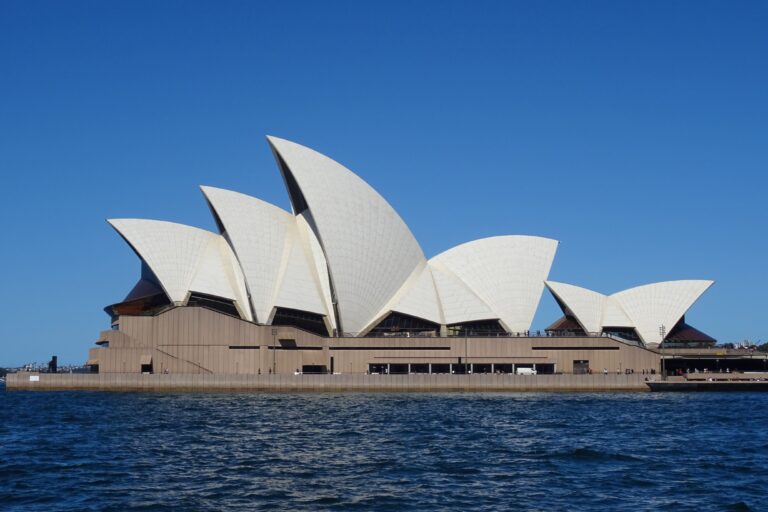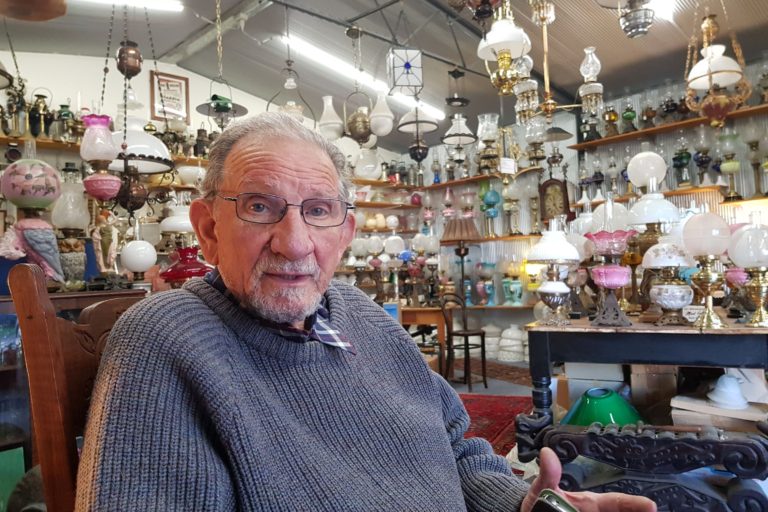By Neena Bhandari
Sydney, 16.02.2003 (The Australian/The Hindu/The Week): As the world celebrates this Year of the Mountains and 50 years of the conquest of Mt Everest, SIR EDMUND HILLARY, who along with Sherpa Tenzing Norgay, was the first to set foot on the summit of this highest peak in the world, spoke to this correspondent from the quietude of his home in Auckland (New Zealand), where he lives with his wife, June, about the sanctity and charm associated with the Everest climb in his days.
At 83, he still loves the mountains and the challenge of the climb and expressed concern at the recent commercialisation of the peak. Amongst his prized possessions is the ice axe, which he used for cutting steps up to the summit; and the enamelled tin mug, with Hillary inscribed on the side, from which he sipped coffee just before 4 am on the fateful day.
What was the view from the `Roof of the World’ at 29,035 feet?
The view is still distinctly imprinted on my mind — the barren highlands of Tibet, the valleys and big ridges going into India, and other great mountains to east and west from Kanchenjunga on one side to Chomolhari on the other.
Where and how did you meet Sherpa Tenzing Norgay? Did you have a close friendship?
I knew of Tenzing by repute. He was known to be a very competent climber before I met him, he had climbed many mountains. The first time I met him was at the start of our Mt Everest expedition in Kathmandu. I was very impressed. He was a very good-looking Sherpa. Quite tall, very strong and big for a Sherpa. I knew by his repute that he was a great acclimatiser and a very good climber. I immediately thought he was a formidable man on a mountain.
Initially, when we climbed together, we were good climbing companions. But I wouldn’t have said that when we were actually on Mt Everest. We were close friends. Perhaps communication was one of the problems. I certainly didn’t speak Sherpa and his English wasn’t great at that time, but we could communicate sufficiently for mountaineering purposes. Later, when I was in Delhi as the New Zealand High Commissioner to India, I saw a great deal of Tenzing. He had become much more fluent in English and we became very good friends. We had lots of discussions together about family problems and problems of the mountains. It was in his last four or five years that Tenzing and me became very close friends.
Who between the two of you was the first to put foot on the summit?
We climbed together. We arrived together. I was leading the rope and I cut steps up to the summit and Tenzing joined me. The point was that we regarded ourselves as a team and who reached the actual summit first was really unimportant to us.
Was it mere chance that you were asked to join Sir John Hunt’s team?
I was a New Zealander, and in those days New Zealand had close relationship with the United Kingdom. I was a British subject and a New Zealand citizen. Now it is all different, we are an independent country. It is because of that and also because Eric Shipton, the famous British climber, had a great respect for New Zealand climbers. He invited me to go on a reconnaissance of the south side of the Mt Everest. I got to know him very well and once you have been successful on an expedition, you tend to be invited again and that is what happened in 1953.
Almost 50 years after your conquest, your son, Peter Hillary, and Tenzing’s grandson, Tenzing Tashi Norgay, climbed the Everest together this year. What kind of feeling did it arouse in you? Was it nostalgia or pride or may be both?
I was delighted to see that my son and Tenzing’s grandson were successful in climbing the Mt Everest. I didn’t worry about it too much except in the last couple of days. Peter had radio communication and I was able to talk to him on his way up the upper parts of the mountain. In a way, perhaps that was a disadvantage. I always knew where he was. He would tell me that climbing in some places was difficult and that they were battling their way on and finally they reached the summit. In a way, I was too close to the problems he had to meet. Ofcourse, when we climbed the Everest, we had no communication with the outside world so we didn’t have to worry about that.
Why did conquest of the Everest mean so much to the world when you and Sherpa Tenzing Norgay achieved the historic feat?
The Everest then was unclimbed. It was the highest mountain. It was a great challenge and we were successful in reaching the summit.
I believe, the work that I did for the mountain people with schools, hospitals and airfields has become very widely known and people regard that as a very worthwhile thing to do. It is a combination of the challenges and overcoming them and of perhaps the good work we have done with our great friends, the local people.
Was it a way of giving something back to the people and the mountains that have given you so much?
Yes, in cooperation with the Sherpas, we have built 27 schools, two hospitals, two airfields and bridges over wide rivers. My wife and my youngest daughter died in a plane crash in Nepal. Later, I married a very good friend of ours, June. She has been working with me in the Himalayas. She is very good at thinking out good ideas and is very warmly accepted by people in Nepal.
We go back to Nepal every year in May. The mountain people are very friendly. We don’t spend much time in Kathmandu, we head straight into the mountains. We have very close relationship with the village people up in the high mountains. We travel to India quite frequently and have many good friends in New Delhi, in particular Mohan Kohli.
Climbing the Mt Everest had a sanctity and charm when you scaled 29,035 feet to reach the summit of the tallest peak in world. Since then, over 1500 people have reached the Everest. How do you view commercialisation of the mountain climb and in particular the Everest?
I don’t really like the commercialisation of the Everest. In our days we loved the mountains and the challenge. We also loved overcoming the difficulties and the problems. There are a lot of people who still have the same attitude, but commercialisation has crept in. Many people, by paying $60,000, try to get conducted by people to the summit of the mountains. They really don’t know anything about mountaineering neither do they care much about the mountains. All they want is to reach the summit, hopefully get back home and perhaps boast about it. I think our love of the mountains and our sense of challenge was the best way to go.
This being the International Year of the mountains, what in your opinion should be done to preserve and protect them?
The mountains in a way preserve themselves, but I think it is very important that the forests that cover the bottom parts of the mountain should not be destroyed. They should be protected both by the local people and the visitors. These forests are a very important part of the culture of the whole area.
Are mountains the only attraction for you in India?
India is a fantastic country with a tremendous variety of things to see. Besides the great mountains, it has a beautiful coast. We recently had a very enjoyable holiday in Goa. The things that particularly appeal to me are the ancient forts and temples. The forts are my favourite in many ways because of the many good stories told about them, the great battles fought over the years, the wives of soldiers who consigned themselves to flames to protect their honour and all the rest of it.
Do you feel safe and comfortable travelling across the country by rail and road?
I have always felt safe and comfortable in India. I drove a great deal around India with my family. We also went by train to many places and we have no concern at all.
Do you think the war in Afghanistan and problems in Kashmir should be of concern for travellers going to India? Which places in India would you recommend for foreign travellers?
I personally think the war in Afghanistan shouldn’t make the slightest difference to people going to India. It is a huge country and a long way from Afghanistan. There are many places within the country that are far away from Kashmir.
We were in Nepal only two months ago and we faced no problems. You can go floating in inflatable boats down the Ganges, visit the great temples and forts, which India is absolutely peppered with, particularly Rajasthan. We went around a great deal of India and I suppose, our favourite part could have been Rajasthan, which is a great place with some beautiful things to see there. You can go to some of the ancient cities, Jaisalmer, which is particularly beautiful and a superb place to visit. We would love to go back to Rajasthan and we will probably do that in the next year or two.
Was travelling across India very different as the New Zealand High Commissioner to India?
It was a very different life, but I worked and loved those 4½ years in India as the High Commissioner (1985 to 1989). We travelled very widely across India and we were given a very warm reception by the people wherever we were. They knew my name because of my relationship with Tenzing. They would often say to me, “Oh! we know that you are a New Zealander, but you are also one of us”. We rather liked that. On many occasions, we went to functions where we were the only foreigners present. We were just accepted by the local people as part of the local society. We enjoyed that.
© Copyright Neena Bhandari. All rights reserved. Republication, copying or using information from neenabhandari.com content is expressly prohibited without the permission of the writer and the media outlet syndicating or publishing the article.




Amazing achievement and doing it without all the modern mountaineering paraphernalia….think there should have been a mention of “Sagarmatha”. [NB: Sagarmatha is the Nepali name for Mount Everest.]
Beautifully written article , loved the interview ?
Enjoyed reading the interview. Interesting questions.
Liked the article. While reading the description of Rajasthan, felt proud.